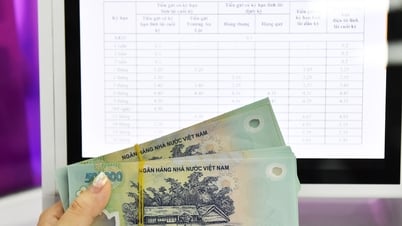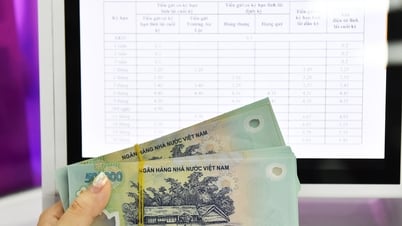Based on the basic interest rate announced by the State Bank (SBV), credit institutions (CIs) will self-announce interest rates (lending and mobilization) according to market supply and demand and in accordance with legal regulations.
Bank interest rate is the rate of deposit capital that the bank or borrower must pay to the depositor or bank within a certain period of time (yearly or monthly).
Bank loan interest is the amount of money that customers have to pay to the bank, calculated as a percentage of the loan amount. Deposit interest is the rate of return that customers receive when depositing money into a savings account at the bank.
Bank interest rates may be adjusted without prior notice, however the applicable bank interest rate may not exceed the ceiling interest rate prescribed by the State Bank and the law.
In fact, bank interest rates are always changing. In case of rising inflation, high prices of goods and services, the State Bank will adjust the basic interest rate to reduce the money supply in the market, tightening the currency. On the contrary, the State Bank can lower the basic interest rate if the inflation rate is low, meaning that bank interest rates can also be reduced to stimulate the economy .

How to calculate bank interest
To calculate bank interest, you must consider factors such as: Interest calculation period; Actual balance of deposits or outstanding loans; Number of days maintaining actual balance; Interest rate.
From there, the interest calculation formula will be:
Interest Amount = (Actual Balance x Actual Number of Days Maintained x Interest Rate)/365
This formula applies to both loan and deposit products.
In bank interest rates there is also the concept of simple interest and compound interest.
Simple interest is the interest rate on a loan that is calculated using the original principal amount and a fixed interest rate. The yield from simple interest is usually less than that from compound interest and the principal amount in the account remains unchanged.
Formula for calculating simple interest: Principal x Interest rate x Time
Compound interest is interest calculated based on the compounding of previous period's interest through the principal. This is also the way to calculate bank deposit interest.
Compared to simple interest, compound interest will have a higher yield. The principal amount will change throughout the bank loan/deposit cycle.
Compound interest formula: P x [(1 + Interest rate) N - 1]
In there:
P = Principal amount
N = Number of compound interest periods
Bank interest rates affect how much money borrowers will spend and how much money savers will save.
When the base rate is low, the lending rate will also be low, which is good news for borrowers. At this time, the monthly profit can be used to pay off loans, save money or spend.
However, businesses/individuals borrowing from banks need to have a full backup plan and a clear risk management plan to ensure the ability to repay payments in case interest rates increase compared to the time of borrowing.
If low interest rates are good news for borrowers, higher prime rates are good news for savers. The ability to generate interest from savings accounts helps savers earn more money. This is also the reason why many people save money in banks when bank interest rates are high.
If you have a fixed-rate loan, your interest rate will not change for a certain period of time. Even if the bank rate changes, your fixed interest rate or monthly payments will not be affected during this period.
However, after the fixed term, the floating interest rate at the expiry date will be applied at the interest rate specified by the lender.
Therefore, changes in the base rate may affect monthly payments if the loan has a floating rate.
(Synthesized from HSBC Vietnam)
Source: https://vietnamnet.vn/lai-suat-ngan-hang-va-cach-tinh-lai-suat-2413511.html


![[Photo] Cuban artists bring "party" of classic excerpts from world ballet to Vietnam](https://vphoto.vietnam.vn/thumb/1200x675/vietnam/resource/IMAGE/2025/6/26/797945d5d20b4693bc3f245e69b6142c)





































































































Comment (0)